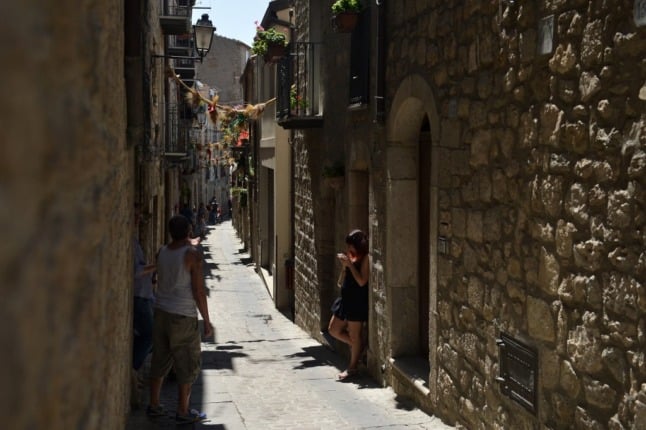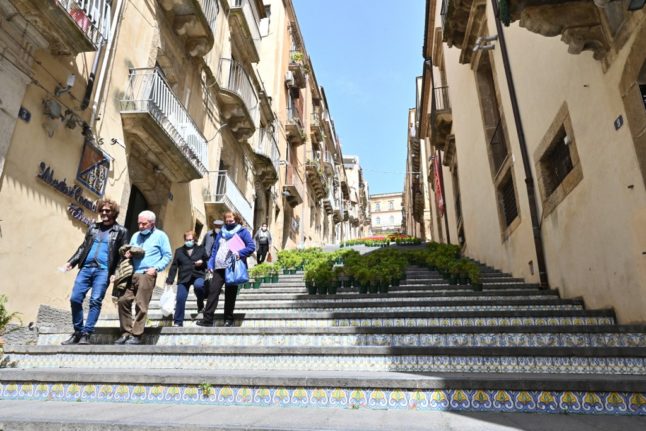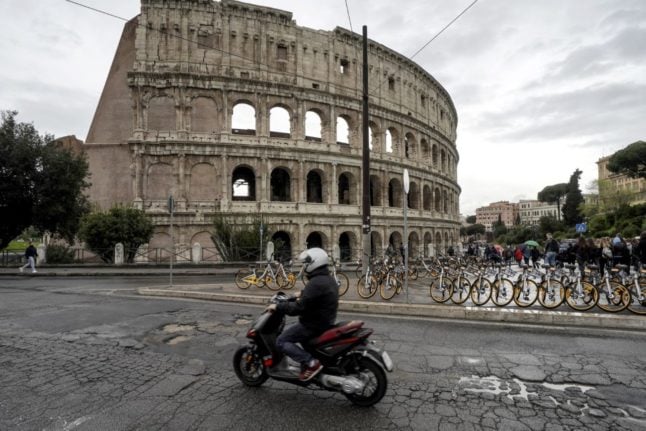Italy has a persistent dichotomy that strikes anyone who has travelled it extensively or lived here for a while.
There’s a huge gap between the quality of life as in efficient services, roads, good internet, and the ‘pleasures of life’, which come down to more immaterial and intangible aspects such as the hospitality and friendliness of locals, the beauty of surroundings, and overall cost of living.
READ ALSO: The best (and worst) places to live in Italy in 2023
Italy’s quality of life surveys usually rank more efficient, cleaner northern cities at the top, with sunny but less functional southern ones at the bottom – though on the other hand these have stunning beaches and cheaper services.
While it’s obviously not always so simple, there are differences which are clear to see.
To take two distinct examples: in northern Bolzano you have punctuality, shiny roads, higher income levels, but also a bit of the stereotypical Teutonic cold, distant attitude. In Syracuse, Sicily, local food is more varied and most people are warm, open to strangers, but trains take ages to connect places, and the roads aren’t great either.
This makes it hard to say which towns are ‘best’ to live in because you just can’t have it all. It depends on what your expectations and lifestyle already are, or if you long for radical change.
READ ALSO: Why are Trento and Bolzano rated the best places to live in Italy?
I could never live in Turin, Milan or Venice – because of the weather, the crowds and the prices.
Were I to choose, I’ve always dreamt of relocating to a southern location to telework, either in Sicily (picturesque Palermo) or Puglia (gorgeous, Baroque Lecce). Even a tiny Sicilian island fascinates me, like Salina or Filicudi, but I might find too much isolation there as winters can get really solitary when the ferry boats don’t travel.
I’ve always envied Sicilians who get to enjoy beach days and warm temperatures eight months a year, have a succulent cuisine and can eat the real ricotta-filled cannoli whenever they feel like it.
Last time I visited Trapani and stayed there for a while the next door neighbor gave me a tray of pastries on the day of my departure. People welcome you into their homes and say ‘buongiorno’ when you meet them in the streets.
Human warmth is almost tangible in the south whereas in the north, perhaps because there are bigger cities, you need to be in small towns or villages to find welcoming residents eager to help you or make you feel at home.
READ ALSO: Why north-south stereotypes aren’t offensive to most Italians
The fact that the value of family is so important in the south, much more than in the north, explains why southerners are more open to outsiders and foreigners than in the north.
Cities like Naples, Lecce and Palermo also have a more laid-back vibe, people are less frenetic than in Milan and seem to enjoy life more. This attitude affects the way visitors feel, too.
People don’t just want clean roads, trains that run on time, efficient hospitals. A smile from a passer-by, a gift, or just a quick chat after a morning espresso can really make your day. Cities reflect the nature of their inhabitants.

I remember once I was touring Sicily heading to Noto, we stopped for some water at a bar in the middle of the countryside and my friend tripped, falling down. In less than a second a bunch of elders who had seen the accident rushed to our side and helped my friend back on her feet, making sure I was okay too.
Taxi rides can be quite enlightening. When you grab a taxi in Milan, Genoa or Trieste, don’t expect the driver to start talking to you unless it’s for specific information. But when I visited Naples and called a cabbie, he turned into my personal Virgil, sharing city secrets and taking me to see offbeat places along the coast. He sang and smiled, which he wasn’t required to do. It was a memorable ride.
READ ALSO: Why are Italy’s disappearing dialects so important?
However, it’s hard to draw a line. I’m not saying that all northern cities have a poor ‘pleasure of life’ level and all southern ones rank low for life quality, but this is a general trend.
And I believe Italy’s eternal north-south dilemma is here to stay.
The European Union’s pandemic funds, partly aimed at reducing these regional gaps, might improve services in the south but they surely can’t turn a gloomy, stressed-out Milanese into a loud, cheerful Neapolitan.
The economic gap (which affects quality of life) between northern and southern cities will always persist. That’s what makes Italy such a rich, multifarious country.
Do you agree with the opinions expressed in this article? How did you choose between the north and south of Italy? Let us know your thoughts in the comments below.



 Please whitelist us to continue reading.
Please whitelist us to continue reading.
People might be willing to help you if you’re in the south, but if do you go to a hospital, or an emergency room, you will most likely not get any help.
“In Syracuse, Sicily, local food is more varied”.
Is this actually true? I mean Sicilian food is amazing, don’t get me wrong, but there are plenty of excellent Sicilian restaurants in Milan. Plus Sardinian, Tuscan, Emilian, Pugliese, Veneto etc. etc. restaurants. How many Lombard restaurants are there in Syracuse?
Or if you meant, Sicilian cuisine is more varied than Lombard/Piemontese/Veneto cuisine, is that true either?
Not trying to start an argument for the sake of it, but trying to stay objective! 😉
I agree 100%. My husband and I took a cab in Naples from our hotel to the main street. We told the driver that we are Italian American from the Bronx. He put a CD in the player and we sang Italian American songs and laughed all the way. We have made so many friends along the way. There is just a different feeling North to South.
I am an ex born and bread londoner , I have lived in the south , capaccio for 19 years and love every minute of it , yes the buraucracy drives me mad but that is really the only problem , the local people are lovely warm people who take you to their hearts , i have a beautiful view of the bay of salerno looking out to capri and the amalfi every day , the food is delicious it actually has a taste ! which was very rare in london , the temperature is warm , only january and february are chillyl I never wear a coat , when my husband died 5 years ago everybody expected me to return to london but it didnt reallly occur to me , I have some lovely friends also my dog who was an abbandonata and my 3 chickens who give me beautiful fresh eggs every day , I wont be returning to the uk .
Don’t totally agree with this. Southern Italians may seem more open and welcoming on the surface, but they are much more ‘diffidente’ and making real connections can take longer for non-Italians.
We live in a small town in Piemonte not far from Casale Monferrato and an hour from Milan or Turin. The people are very warm and friendly, and the food and wine are incredible. Easy access to trains that go to major cities in Italy, France, Switzerland and the rest of Europe. While I’m sure there are great things in the south, it seemed very conservative and, while friendly, the people were not very open minded.